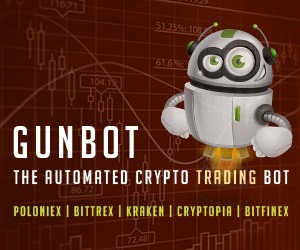If you get scammed in this way, you may accept this counterfeit as final payment, and may send goods in exchange for the fake bitcoin. One day, when you connect to a genuine Bitcoin node, your wallet will show that you never in fact received bitcoin. Your balance will be lower than what you thought it should be, because the fake transfer never existed on the real Bitcoin blockchain.
You can prevent this by connecting your wallet to a node you trust, but even better is to connect to your own node. “Don’t trust, verify,” is the Bitcoiner’s mantra.
Not doing this is kind of like accepting gold as payment, and asking a random person to use their XRF analyser to check if the gold you received is real. You don’t know if that random person is on the side of the buyer, or if they are honest.
You might ask, “No trust? Wait, aren’t I trusting Bitcoin Core when I download it? How do I know THAT’s not fake?” Yes and no. There are ways to verify that the software you downloaded is genuine, but that’s not for this article.
You might then ask, “Aren’t I trusting the developers that the genuine copy is behaving as I expect?” Actually yes, unless you write the software yourself, or read the code, or pay someone to read the code — but then you are trusting them. There has to be some level of trust, but the idea is to keep it to a minimum. (Just saying that might get me in trouble with the Bitcoin mob, shhh!) Most people (me included), can’t and won’t read the code, so there is some element of trust. The trust is that hundreds, maybe thousands, of developers’ eyes are going over the code looking for errors and problems before it is released. It’s not easy to make changes to Bitcoin Core, and this is a feature, not a bug. Using the gold XRF analyser analogy, you are probably not going to build one from scratch to check whether or not your gold is real, and that’s okay.
Reason 3
Defend the Bitcoin rules from unwanted changes — like scarcity or block size.
If a group of “powerful” people banded together, as they did in 2017, and decided to try to change the rules of how Bitcoin works (for example, by increasing the block size), you can choose to not upgrade your node to the new system and keep your current node. If you are more than the minority, there will be a pool of people running the unchanged Bitcoin Core and a pool of people running the changed version — a fork. This is how Bitcoin Cash was born. The new version was unanimously rejected, but those who lost the war kept running their nodes and mining bitcoin cash as well. Those who owned bitcoin then also owned bitcoin cash. For a given address, there was one balance on the Bitcoin blockchain, one balance on the Bitcoin Cash blockchain.
If you weren’t running your own node at the time, you had no say in this war. Your wallet might have connected to a Bitcoin Cash node and someone might have paid you in bitcoin cash instead of with bitcoin. You then might have given up your goods in exchange for coins that didn’t meet the monetary policy you preferred.
Reason 4
If you run a node, and leave it on 24 hours a day, this helps the network.
The more nodes that are running, the faster transactions can propagate for everyone, and the harder it is to shut down Bitcoin. In order to kill Bitcoin, every single copy of the blockchain must be destroyed.
Reason 5
Be an “Uncle Jim”.
In the future, it may be too challenging for EVERYONE to run their own node, but we don’t want people trusting random nodes. I imagine there will be a technical person in every social “circle of trust” (“Uncle Jim”) for people to connect their wallets to. This tiny trade-off is far better than connecting to random public Bitcoin nodes.
If you learn to run your own node, then YOU also become a kind of human node, because you could one day help someone else to run and use their own node.
Reason 6
Coolness factor and street cred.
Running your own node is super cool, and gives you a great appreciation of the power of Bitcoin. You’ll probably end up buying more.
Conclusion:
Hopefully, it is clear now why you should run a node. There are various ways. If you want individual help, see here . For the computer illiterate, help is available at www.bitcoin4boomers.com .
This is a guest post by Arman the Parman. Opinions expressed are entirely their own and do not necessarily reflect those of BTC Inc or Bitcoin Magazine.





